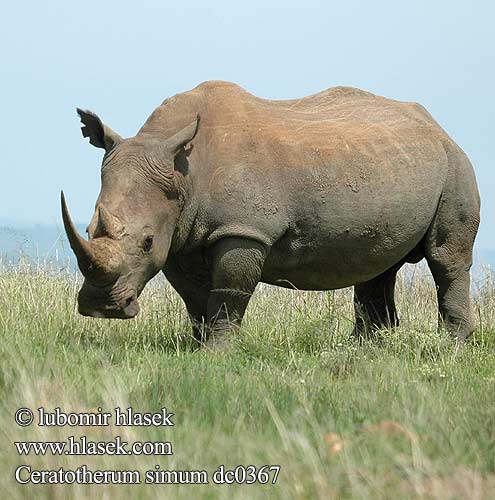

The White Rhinoceros is well known for its wide mouth used for grazing and for being the most social of all rhino species. The White rhino is larger than the Black rhino, in fact the White rhino can grow to be larger than any other land mammal except for elephants. Behind the elephants, this is probably the most massive remaining land animal. It is also good for students to interact and communicate with researchers in other labs and in their field of study.The White Rhinoceros or Square-lipped Rhinoceros (Ceratotherium simum) is one of the 5 species of rhinoceros that still exists and is one of the few megafauna species left. "My goals of involving students in research collaborations are to enhance their interest in research by learning different lab techniques, to enrich their academic experience and to generate a tangible outcome for their future career in the form of being an author on a research paper.

student is in itself remarkable," Chelladurai said. "The fact that Theresa has several papers in her first year as a Ph.D. Quintana said this was a great opportunity to practice a different style of written communication with a different type of audience in mind.

"She empowered me to feel I could successfully write this case report and address reviewers' feedback during editing." Jeba presented me with the opportunity to conduct the molecular experiments and analysis and write this type of scientific literature piece," Quintana said. Quintana said the veterinary diagnostic lab has unique access to these types of interesting cases that can result in some rare and unusual parasite findings, and she shared her appreciation for Chelladurai's encouragement throughout this process. "I am especially proud that our students have opportunities to leverage the skills of world-class experts in diverse disciplines to advance our understanding of parasite infections in understudied species such as the rhinoceros." "The publication of this case report is an outstanding example of multidisciplinary collaborations that underpin the responsive and engaged research and service delivered by our faculty, staff and students in the College of Veterinary Medicine at Kansas State University," said Hans Coetzee, associate dean for research and graduate programs in the college. The nematodes were believed to have caused inflammation of the colon in the rhinoceros but were not related to its cause of death. Kristen Hill-Thimmesch found the parasites in the colon and sent them to the parasitology lab for identification."Ĭhelladurai, who is Quintana's faculty mentor, morphologically identified the parasites, which are classified as nematodes of the genus Kiluluma - Strongylidae, Cyathostominae. "The rhino was submitted by a zoo to the Kansas State Veterinary Diagnostic Laboratory for necropsy, where Dr. "The collaborators on this paper all brought a distinctive skill set to the table," Quintana said. The case report, " Kiluluma ceratotherii (Nematoda: Strongylida) in a White Rhinoceros (Ceratotherium simum) from the United States: Case Report," includes additional authors Jeba Jesudoss Chelladurai, assistant professor of parasitology Brian Herrin, associate professor of parasitology Grace Schieferecke, junior in microbiology, Eudora Kamilyah Miller, doctoral student in pathobiology, Miami, Florida and William Johnson, research assistant and first-year veterinary student, Wyandotte, Oklahoma. Theresa Quintana, a concurrent doctoral and Master of Public Health student, Topeka, was the student first author on the article. The findings were published in the September issue of Parasitologia, an international, peer-reviewed, open-access journal. MANHATTAN - A Kansas State University research team in the College of Veterinary Medicine recently uncovered the existence of an unexpected class of parasites in a white rhinoceros - the first such case report ever made in the United States.


 0 kommentar(er)
0 kommentar(er)
